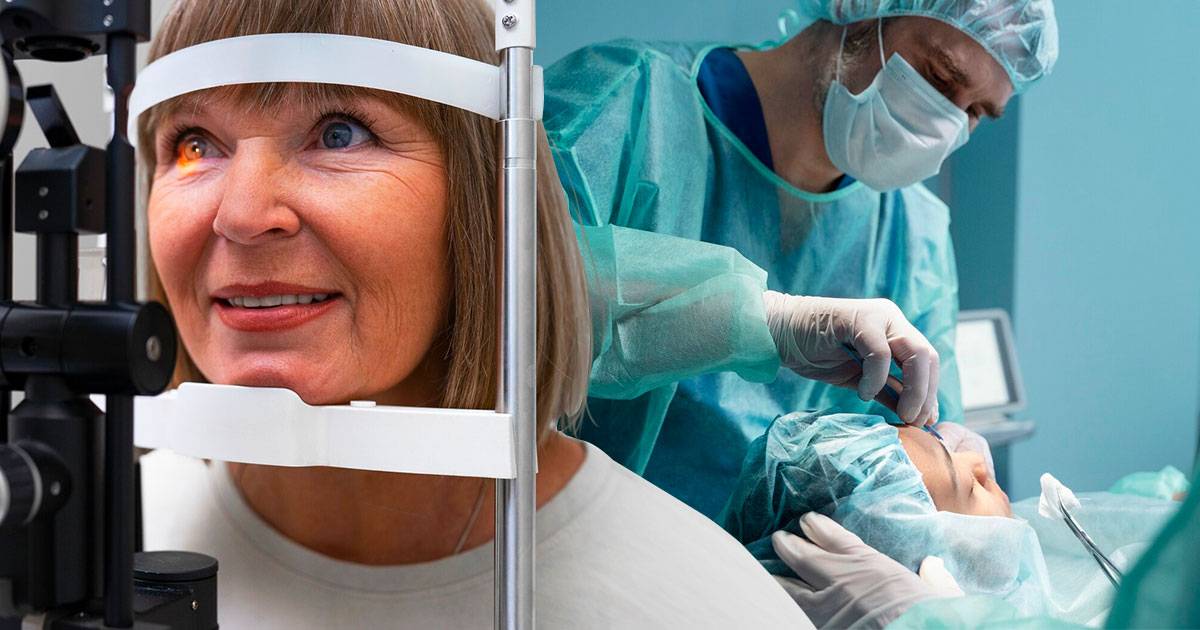Cataract Surgery vs LASIK: Which Vision Correction Procedure is Better?

Visual health is an important aspect of our overall well-being that is frequently overlooked until a problem arises. According to a National Institutes of Health (NIH) study, 94 percent of Americans who are 12 years of age and older have good vision, leaving the remaining 6 percent, or about 14 million people, with visual impairments. This emphasizes not only the importance of maintaining good eyesight but also the potential impact of vision issues.
Good vision is paramount to our daily lives, with our eyes responsible for up to 80% of all impressions we perceive. Impaired vision can significantly affect our productivity, enjoyment of life, and even safety. In fact, the CDC notes that good vision is crucial for quality of life, and loss of vision can lead to disability, morbidity, and loss of productivity.
To address vision problems and restore their eyesight, many individuals opt for surgical procedures. Cataract and LASIK surgery are two of the most popular forms of eye surgery. While both aim to improve vision, they target different vision issues and involve different procedures.
Understanding LASIK and Cataract Surgery
LASIK and cataract surgery are two commonly performed eye surgeries, each targeting specific vision issues.
LASIK Surgery
Laser-Assisted In Situ Keratomileusis, short for LASIK, is a refractive eye surgery procedure. The purpose of this procedure is to reduce the patient’s reliance on prescription glasses or contact lenses by correcting common vision issues such as astigmatism, myopia (nearsightedness), and hypermetropia (farsightedness).
During the procedure, the cornea—the transparent, rounded dome at the front of the eye—is reshaped using a specialized laser. Clearer vision is the result of better light distribution onto the retina, the light-sensitive tissue located at the back of the eye.
Cataract Surgery
On the other hand, cataracts—a clouding of the natural lens inside the eye that results in decreased vision—are removed through a process known as cataract surgery. This condition is often related to aging but can also occur due to injury, certain medications, or illnesses like diabetes.
During cataract surgery, the clouded lens is removed and an intraocular lens (IOL), an artificial lens, is placed in its place. This lens greatly enhances visual acuity and is a permanent component of the eye. Restoring clear vision and enhancing the quality of life for those who have cataracts is the main goal of this procedure.
Key Differences Between LASIK and Cataract Surgery
While both LASIK and cataract surgery are designed to improve vision, they differ in several key aspects:
Aim of the Surgery
Astigmatism, hypermetropia, and myopia are three vision issues that can be resolved with refractive surgery called LASIK. On the other hand, cataract surgery is performed to remove cataracts, which are cloudy formations on the lens of the eye.
Part of the Eye Targeted
Reshaping the cornea to enable optimal light focus on the retina is the process of LASIK surgery. On the other hand, cataract surgery includes taking out the clouded lens and replacing it with a synthetic one.
Procedure
A thin flap in the cornea is created during LASIK by a laser, and it is then raised to enable a different laser to reshape the corneal tissue underneath. After that, the flap is moved, and it heals on its own. But during cataract surgery, a tiny incision is made in the eye to remove the cloudy lens and replace it with an artificial, clear one.
Recovery Time
With LASIK, recovery times are typically shorter, and many patients report better vision in as little as 24 hours. Cataract surgery recovery is a bit longer, typically taking a few weeks for vision to fully stabilize.
Longevity of Results
The vision correction achieved with LASIK is typically permanent, although some patients may require a follow-up procedure if their vision changes over time. Cataract surgery permanently removes the cloudy lens, and the artificial lens inserted does not age, so the results are also typically permanent.
Can LASIK surgery correct cataracts?
When it comes to vision correction, it’s crucial to understand the capabilities and limitations of each surgical procedure. One common misconception is that LASIK surgery can correct cataracts. However, this is not the case.
By reshaping the cornea, LASIK surgery is intended to treat refractive errors like myopia, hypermetropia, and astigmatism. In contrast, cataracts are caused by a clouding of the natural lens within the eye. Since LASIK does not involve the lens of the eye, where cataracts form, it cannot correct or reverse cataracts.
If cataracts are affecting your vision, LASIK surgery is generally not advised. Rather, the recommended method for clearing cataracts and regaining vision is cataract surgery. To do this, a synthetic lens must be used in place of the clouded one.
That said, it is possible for someone to undergo both LASIK and cataract surgery, but only in that order. You can still have cataract surgery if you have already had LASIK surgery. In many cases, however, cataract surgery can eliminate the need for LASIK.
Which is better: LASIK or cataract surgery?
The question of which procedure is better—LASIK or cataract surgery—depends largely on the individual’s specific eye condition and needs.
LASIK may be a better choice if you have refractive errors and wish to lessen your reliance on glasses or contact lenses. However, if you’re experiencing cloudy or blurred vision due to cataracts, then cataract surgery would be the most appropriate solution.
A person who has had LASIK may need to have cataract surgery in the future. However, in most cases, once you’ve had cataract surgery, you’re no longer a candidate for LASIK.
In conclusion, neither surgery is inherently “better” than the other. Each addresses different vision problems and serves different purposes. The best course of action for your particular circumstances will only be determined after consulting with an ophthalmologist.
